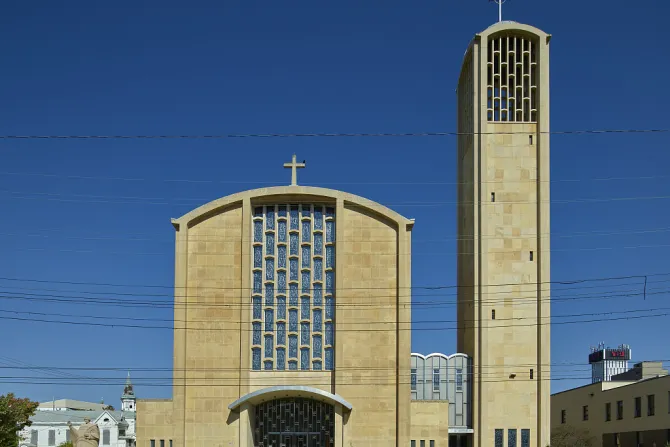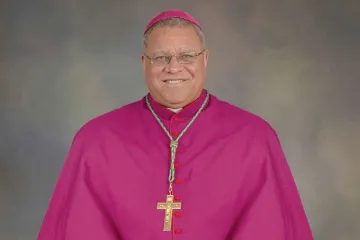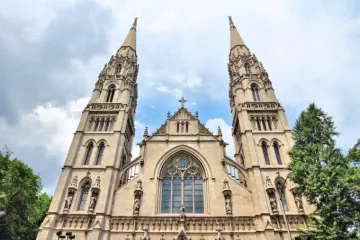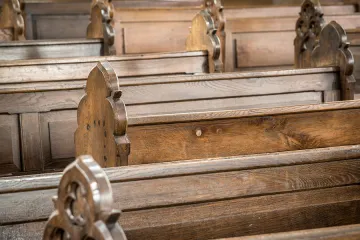Youngstown, Ohio, Mar 26, 2019 / 17:01 pm
The Diocese of Youngstown is planning to respond to serious challenges caused by declines in Catholic affiliation and participation, the looming retirement of many priests, and a general decline in the area's population.
"Our priests have been stretched beyond what is healthy trying to maintain current parishes and Mass schedules," Bishop George Murry, S.J., of Youngstown said in a March 22 letter to the Catholics of his diocese. "Given the fewer number of priests and fewer number of active Catholics, we can no longer continue the status quo."
Ohio population projections foresee continued decline over the next decade. There is also "significant decline" in Catholic affiliation and participation, Murry reported. Registered parishioners have declined 36 percent since 2000 and general participation in parish life has "decreased even more."
Regular weekend Mass attendance is down by over 60 percent, and Baptisms, First Communions, Confirmations, and Marriages are one-third the number they were in 2000.
Fewer priests are a "serious challenge." As of 2000, there were 116 priests in active ministry in the diocese. This declined to 73 in 2018, and the diocese estimates the number of priests will fall to 55 in 2025. Thirteen priests are over 71 years old, and more than half of the priests are over age 61.
In light of these and other factors, Murry said, any pastoral plan "must renew and strengthen our ministry to those within our care, and also those who do not participate in the life of the Church on a regular basis."
The situation requires "shared sacrifice."
The dioceses' six counties will be divided into 17 pastoral regions which each include multiple parishes. These parishes will collaborate in administration and ministry to best address the local situation, Murry said. Each region will recommend to the bishop how best to celebrate Masses and how best to collaborate among staff, programs, events, and outreach efforts.
So far the only decisions of the planners concern the regional approach to pastoral ministry and the implementation of church law barring priests from celebrating more than three regular weekend Masses over the Saturday anticipated Mass and Sunday. This implementation will require some changes in Mass schedules.
At present there are 234 Masses celebrated each weekend in the diocese, but the church buildings are under half-capacity for 77 percent of these Masses. About 40 percent of priests are responsible for multiple ministries, parishes, or worship sites.
"While there are many challenges, there are also opportunities," Murry said. "The Holy Spirit is present as our helper and guide, empowering the clergy and laity to work together, each using their gifts for building up the Church."
He prayed that the planning process may be an occasion for everyone to grow more deeply in their faith, remembering "the promise that Jesus will be with us, even to the end of the age."
According to the Catholic Hierarchy website, the total population in the territory of the Youngstown diocese peaked in 1980 at over 1.3 million, of whom Catholics numbered 286,000 – about 22 percent.
Youngstown diocesan figures for the year 2000 report about 256,000 Catholics out of 1,220,000 people, declining through 2018 to 163,000 Catholics out of 1,166,000 people, about 14 percent of the population.
Declining population trends are not unique to the Youngstown diocese but are "especially apparent" throughout the Midwest and Northeast.
"The difficult economic climate continues to cause people to move out of the area," said Murry. "We are also experiencing more deaths than births within the region."
Regular Mass attendance in the diocese numbered close to 107,000 in the year 2000, falling below 81,000 through 2010 and under 41,000 by 2018, a decline of more than 50 percent in 18 years. Infant baptisms and first Holy Communions numbered more than 3,000 in 2000, with more than 1,000 weddings. By 2018, there were only 1,000 infant baptisms and about 500 weddings.
(Story continues below)
School and parish religious education numbers have also fallen significantly.
Pete Schafer compiled the figures used by the diocese.
"I was surprised when you see the decline over 20 years," Schafer told the CBS television affiliate WKBN. He was particularly concerned by the decline in baptisms.
"That's the entrance into the Church, into our faith," he said. "The number of parents that are bringing their children to be baptized, the number's so far down that it is pretty alarming."
The diocese's material on the pastoral plan encouraged prayers for priests and vocations, as well as lay support for their local Catholic communities.
The pastoral planning process began in 2009 to respond to needs to change administration and priestly ministry in parishes. The latest plan was developed by a committee of the Priests' Council, then reviewed by the whole Priests' Council and the Diocesan Pastoral Council.
Bishop Murry acknowledged that time is required to consult clergy and laity and to make specific recommendations. At the same time, he said the situation is urgent given that six priests will retire this summer and at least 10 more are serving beyond the retirement age of 70.
He said regular updates on the process will be available through the diocese's newspaper the Exponent, the diocese's website, and parish bulletins.
The diocese hopes to have further plans from pastors by Easter.





